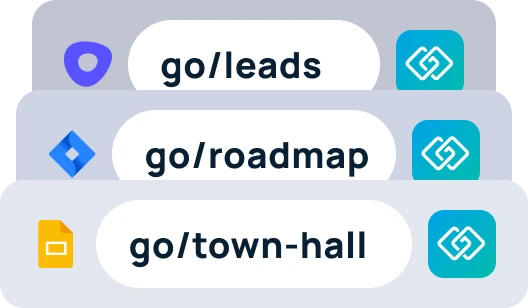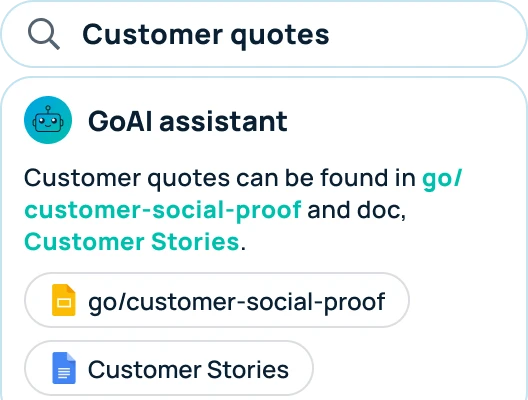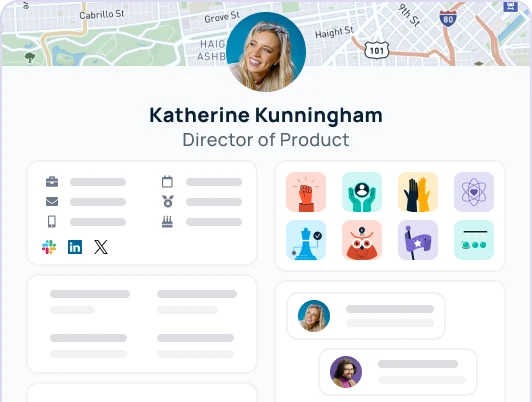Employee analytics, the systematic use of workforce analytics to optimize workforce management, improves how companies understand and engage their employees.
One advancement in the past few years has drastically improved this process: generative AI.
In a 2021 Oracle study, they found that:
- Only 36% of HR respondents agreed that their people analytics platform delivered actionable insights.
- 49% of HR participants found data integration fairly or very difficult.
- More than a third of respondents pulled data from four or more systems to create people analytics reports.
- Spreadsheets were still the most common analytics tool.
These are all pain points that AI solves for companies leveraging employee analytics.
This article will delve into what people analytics are, why they matter, the key metrics to track, and how AI can drastically enhance your HR analytics capabilities.
What are employee analytics?
Employee analytics involves the collection, analysis, and interpretation of employee data to make informed decisions about workforce management. This data can range from basic personal information to complex performance metrics, providing a comprehensive view of the workforce.
By leveraging this data, HR leaders can gain insights into employee behavior, performance, and overall organizational health.
Why do employee analytics matter?
Employee analytics matter because they provide actionable insights that can drive strategic decision-making.
By understanding patterns and trends within the workforce, HR leaders can:
- Improve employee engagement and retention: Data-driven insights help identify factors that contribute to employee satisfaction and engagement. For example, measuring employee engagement through pulse surveys can reveal which initiatives are most effective in boosting morale, allowing HR to focus resources on high-impact areas. Similarly, identifying employee turnover rates and reasons for employee exits can inform retention strategies.
- Enhance productivity and performance: By analyzing performance data, HR leaders can pinpoint areas where employees excel and where they may need additional support or training and development. Understanding these dynamics allows for targeted interventions that can enhance overall productivity. For instance, if data shows that employees perform better with flexible work arrangements, HR can advocate for more adaptable policies to improve work-life balance.
- Optimize workforce planning and development: Employee analytics can forecast future hiring needs based on current trends and business goals. This proactive approach ensures that the organization is prepared to scale effectively without over- or under-hiring. Additionally, tracking skill development and career progression can help in designing effective training programs and succession plans.
- Foster a positive and inclusive workplace culture: Analytics can highlight diversity and inclusion metrics, helping HR to identify gaps and implement strategies to build a more inclusive environment. Data on employee sentiment and feedback from employee engagement surveys can also provide insights into the workplace culture, guiding initiatives to improve the overall work environment.
What are the top employee analytics to track?
To maximize the benefits of employee analytics, it’s essential to track the right metrics.
Here are some key areas to focus on:
People data
Tracking basic and advanced employee information is fundamental to understanding your workforce. Key data points include:
- Personal information: Demographic details such as age, gender, and location. This data helps in understanding the diversity of the workforce and tailoring HR initiatives to meet diverse needs.
- Employment information: Details like job title, department, hire date, and employment status (full-time, part-time, contract). This information is crucial for workforce planning and organizational structuring.
- Performance/work history: Metrics such as performance review scores, project completions, and promotion history. Analyzing this data helps in identifying high performers, understanding career progression, and making informed decisions about promotions and development opportunities.
- Learning and development: Track participation in training programs, certifications obtained, and skills acquired. This data can help in assessing the effectiveness of training programs and identifying areas for further development.
Company trends
Understanding broader company trends can provide context for individual metrics, offering a macro view of the organization’s health. Key trends to monitor include:
- Headcount and growth: Track the total number of employees and the growth rate over time. This data helps in understanding the scale of the organization and planning for future growth.
- Employee tenure and anniversaries: Monitor the average tenure of employees and celebrate work anniversaries. This data can provide insights into employee loyalty and identify potential areas of concern regarding retention.
- Manager to IC ratio: Assess the balance between managers and individual contributors. A healthy ratio ensures effective management and support for team members.
- Location distribution: Analyze the geographic spread of your workforce. This is particularly important for remote or distributed teams, helping to address regional needs and optimize resource allocation.
- Salary and compensation trends: Track compensation levels across different roles and departments. This data is vital for ensuring competitive and equitable pay practices.
Employee engagement metrics
Engaged employees are more productive and less likely to leave. Key employee engagement analytics include:
- Peer recognition insights: Track how often employees recognize each other and for what reasons. This data helps in understanding the culture of appreciation within the organization.
- Employee feedback and sentiment analysis: Gather and analyze feedback from surveys, employee net promoter scores (ENPS), and sentiment analysis tools to understand employee morale and areas needing improvement.
Team achievements
Understanding team dynamics and accomplishments can foster a collaborative environment. Key metrics to track include:
- Peer recognition analytics: Analyze recognition data by department, recognition type, and timeframe. This data helps quantify and celebrate team successes, providing a clear picture of how different teams contribute to organizational goals.
- Project completion and milestones: Track the completion of major projects and milestones achieved by different teams. This data is useful for performance reviews and strategic planning.
- Collaboration and team dynamics: Measure the frequency and quality of collaboration among team members. Tools like network analysis can provide insights into how effectively teams are working together.
How does AI help companies track employee analytics?
AI is transforming employee analytics by automating data collection, analysis, and reporting. Here are specific examples of how AI helps companies track analytics:
Automated real-time data collection
AI tools can automatically gather data from various sources such as HRIS systems, performance management platforms, and employee surveys, ensuring comprehensive and up-to-date information.
Pattern and trend identification
AI can analyze vast amounts of data to identify patterns and trends that may not be immediately apparent. For instance, it can detect early signs of employee disengagement or predict potential turnover risks based on historical data.
Predictive analytics
AI can forecast future trends, such as workforce needs and potential skill gaps, enabling proactive planning and strategy development.
Natural language processing (NLP)
AI-driven NLP tools can analyze text data from employee feedback and surveys to gauge sentiment and identify common themes or concerns.
Real-time insights
AI-powered dashboards provide real-time analytics, allowing HR leaders to make quick, informed decisions. For example, an AI system can instantly update metrics on employee engagement following a company-wide initiative.
Personalized recommendations
AI can offer tailored recommendations for individual employees based on their performance data, career aspirations, and learning needs, helping HR to design personalized development plans.
Chatbots for quick data retrieval
AI chatbots can provide instant answers to queries about employee data without human resources teams or employees having to search for them.
AI-powered employee analytics tool: GoProfiles
One of the leading tools in AI-powered employee analytics is GoProfiles. This employee engagement and culture tool uses AI to pull meaningful employee insights.
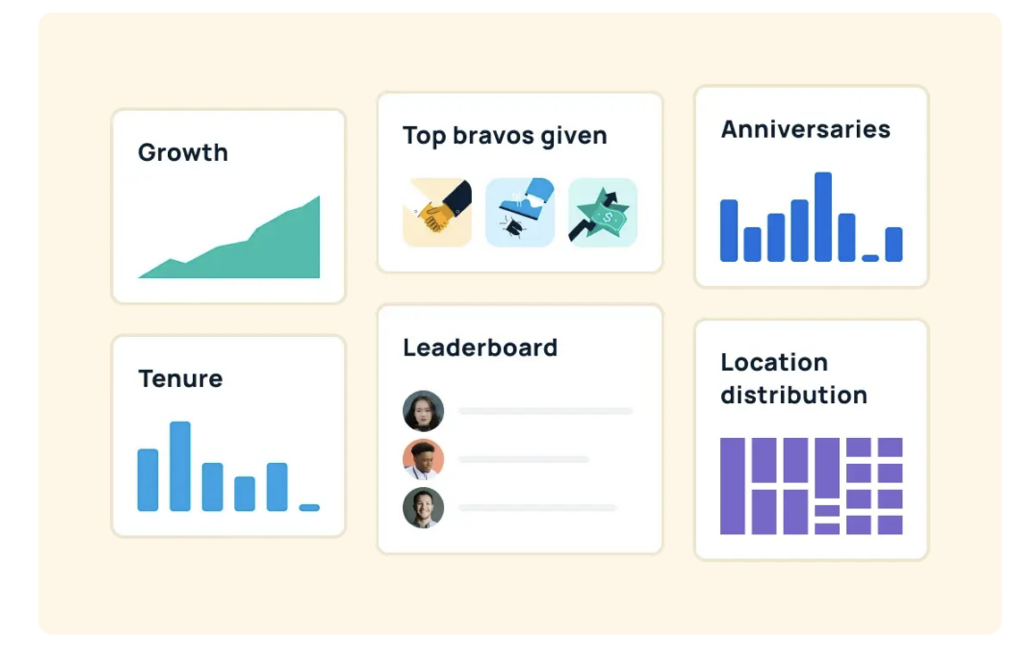
Here’s how GoProfiles can help your organization:
1. Discover insights to connect your team
GoProfiles serves as your single source of truth for employee engagement and people data, delivering valuable insights into company growth and team achievements. By seamlessly integrating to your HRIS systems, GoProfiles pulls in information and organizes it into digestible graphs and reports, making it easier to understand and act on employee data.
2. Explore company trends
Uncover critical trends like current headcount, employee growth, tenure and anniversaries, manager to IC ratio, location distribution, and more. GoProfiles makes it easy to explore and understand these trends through intuitive dashboards.
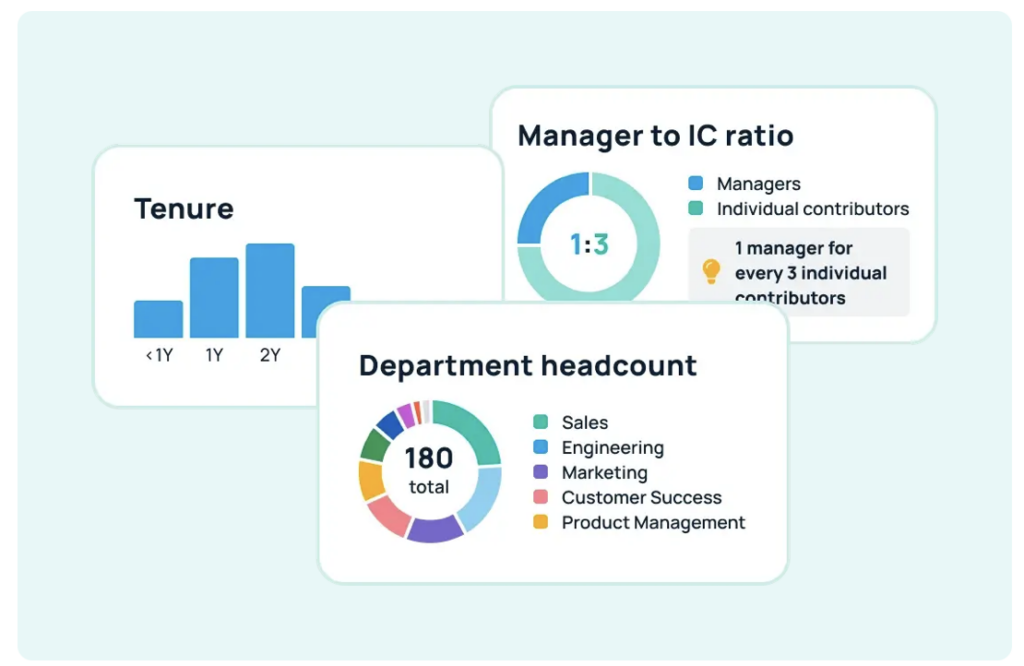
3. Real-time AI data points
The system’s AI capabilities help surface important data points, enabling quick and informed decision-making. For instance, rather than searching for a particular graph or analytic within the platform, you can converse with the AI chatbot for your answer. Ask questions like, “Who are our latest hires?” or “How many people managers do we have in the company?” to get immediate, accurate summaries.
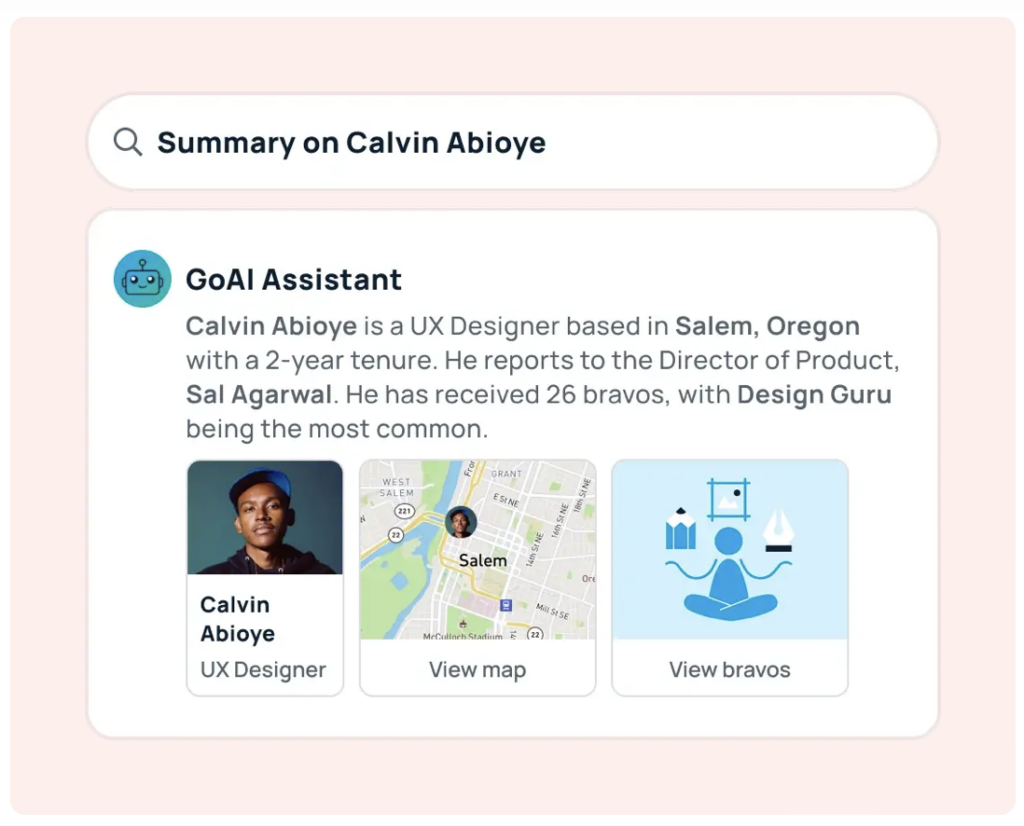
4. Role-based analytics dashboards
Manage access to sensitive data by using role-based analytics dashboards. Choose which company analytics employees can view and which are restricted to your admin-only dashboard, ensuring data security and privacy. This feature allows for tailored insights depending on the user’s role within the organization, promoting transparency while maintaining confidentiality.
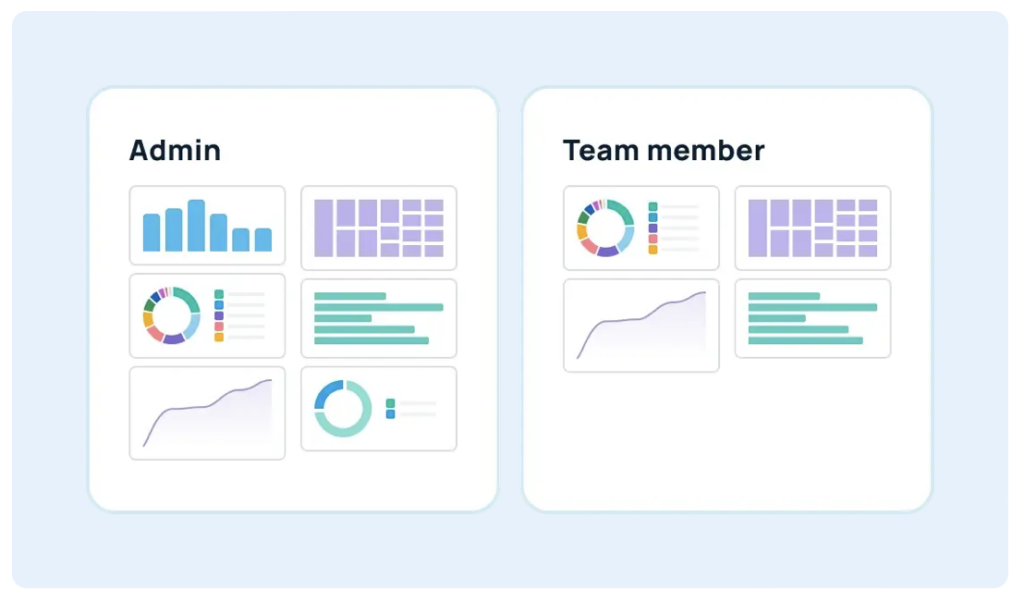
5. Team achievement and engagement insights
View detailed peer recognition analytics by department, recognition type, and timeframe to quantify and celebrate company and team achievements. This feature helps you understand and promote the positive impact of peer recognition across your organization, highlighting the contributions of different teams and fostering a sense of accomplishment and community.
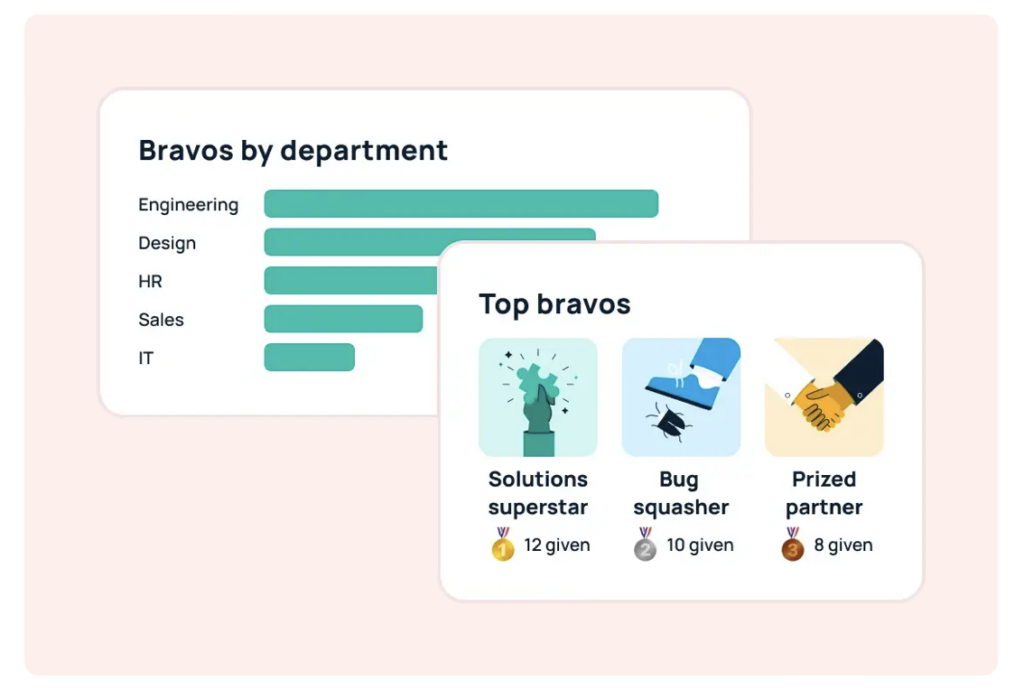
6. Empower employees with self-service analytics
GoProfiles also makes employee analytics accessible to all employees, not just HR teams. Using the chatbot feature, employees can surface coworker information by asking questions like “Who leads customer success?” or “What coworkers are located in my city?” This self-service approach empowers employees to make more informed decisions at work without having to bother HR for answers.
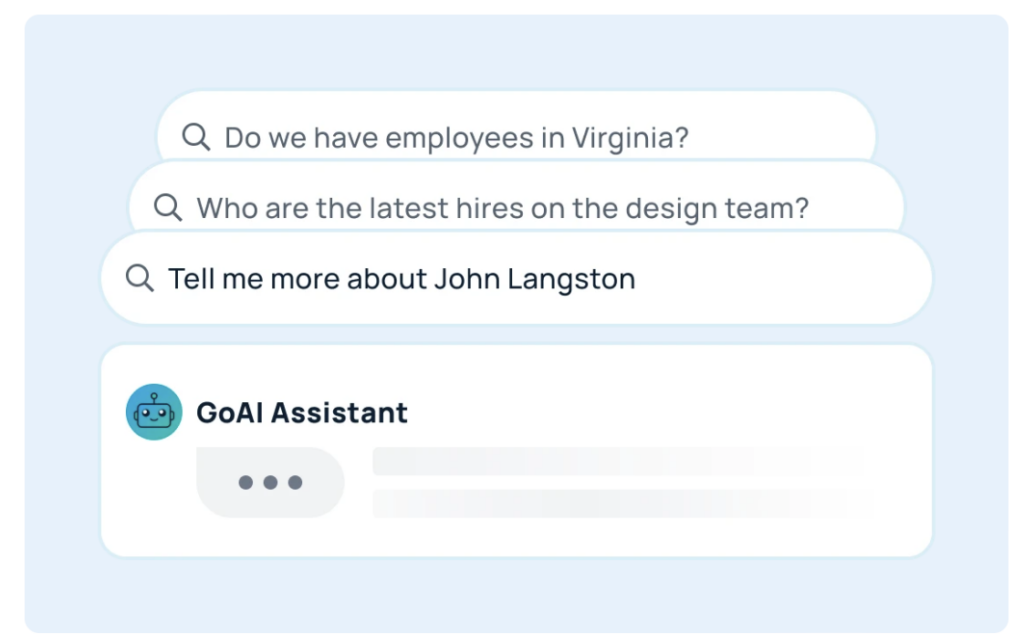
Get better employee analytics with AI
Employee analytics are crucial for modern HR management, offering insights that drive strategic decision-making and foster a positive workplace culture. AI tools like GoProfiles empower HR team leaders to harness the power of data, ensuring their teams are engaged, recognized, and aligned with organizational goals.
Ready to transform your employee analytics? Discover the capabilities of GoProfiles today and take the first step towards a data-driven HR strategy.

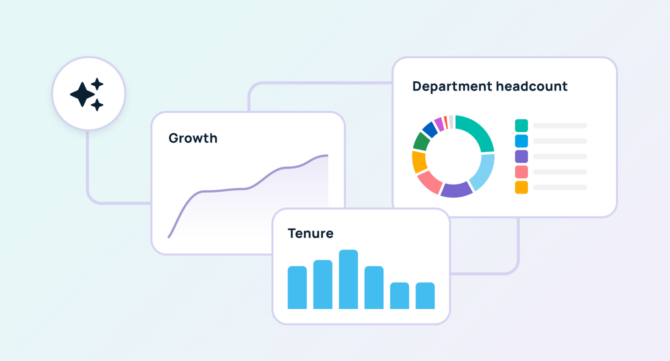
![A Guide to HR Tech Stack Consolidation [Strategies & Tools]](https://images.goprofiles.io/blog/content/uploads/2024/06/10141251/goprofiles-hr-tech-stack-article%402x-370x184.png)


